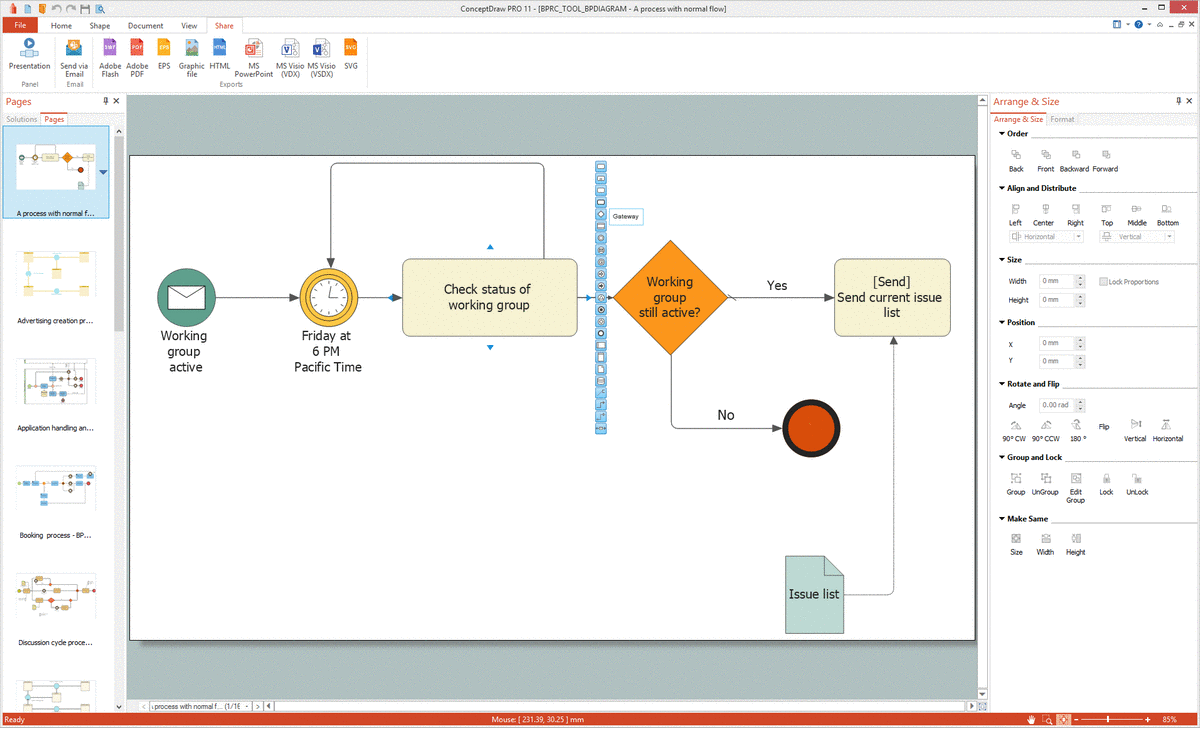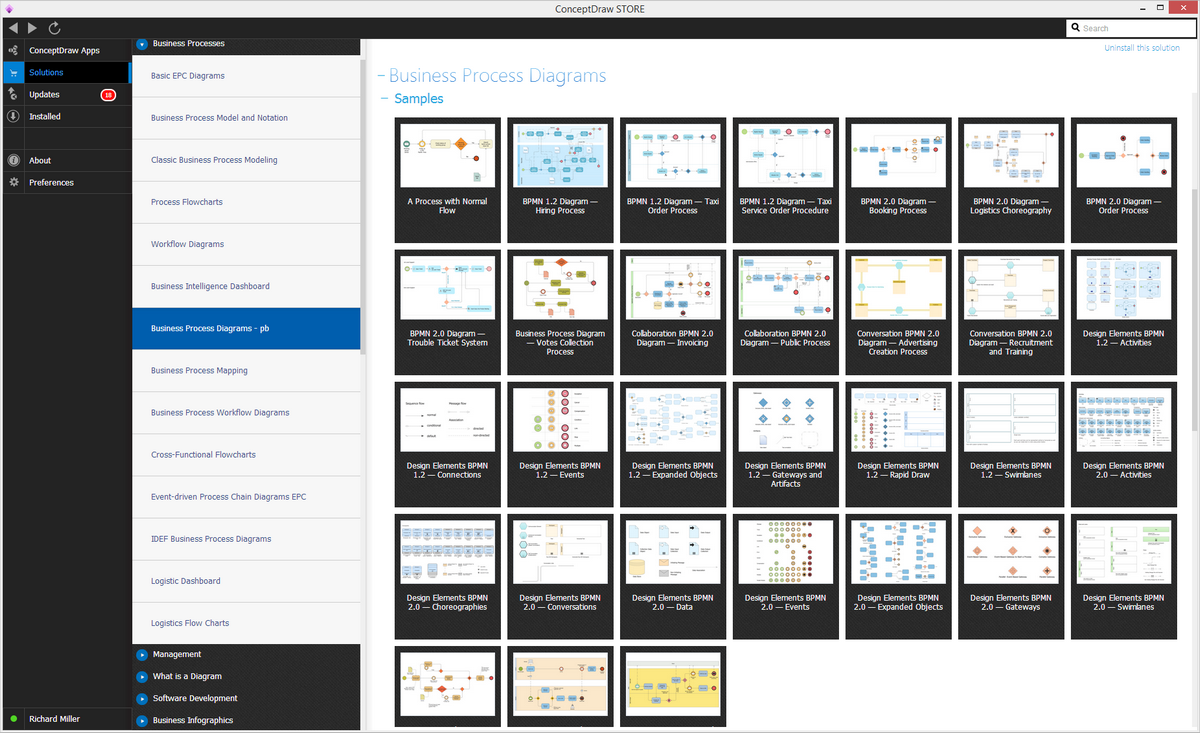BPM Software
Business process modeling, or BPM, in such field of business activity as systems engineering is the activity of representing different processes of some enterprise in a way, so that they can be improved or/and analysed. Business process modelling is usually performed by those who are involved in conducting the business analysis, providing expertise in some particular modelling discipline. It can also be performed by the subject matter experts, specialized in the knowledge of the processes which are being modelled. Most commonly, any business process modelling is what is performed by a team of the both mentioned specialists.
The business goals are often those, focused on increasing the process speed or reducing the cycle time. Some companies may have their objective as the one to improve and increase quality or to reduce costs, such as those for materials, scrap, capital or labour ones and so to have more profit left. Any management decision is to invest in business process modeling and it is often motivated by the necessity of documenting the requirements for some information technology projects.
The change management programs are usually known to be involved in the activity of putting any improved business processes into practice and so having the advances in the software design, the vision of different business processes models are becoming fully executable as well as capable of round-trip engineering and simulations, coming closer to reality.
The well-known and commonly used business process modelling tools are known to be providing all the business users having them with the ability of modelling their own business processes, implementing and executing them, as well as refining the models based on the so-called «as-executed data». As a result, the business process modelling tools can provide the needed transparency into numeral business processes and the centralization of the corporate business process models, as well as the execution metrics. Modelling tools can also collaborate the modelling of different complex processes by those users who work in teams, so they can share and simulate the models collaboratively.
There is such term within the business process modelling as business process reengineering, or BPR, aiming to improve the effectiveness and the efficiency of different processes existing across and within organizations. Examining different business processes from a so-called "clean slate" perspective to determining how to better construct them, the specialists involved in the business process reengineering, same as in the business process modelling, find the ConceptDraw DIAGRAM diagramming and drawing software a very useful as well as helpful tool for making the needed drawings in order to succeed in what they do.

Example 1. ConceptDraw DIAGRAM — BPMN Software
The business process management in general is a field of management that is focused on aligning all the involved organizations with the needs of their clients in order to satisfy them. Being one of the most commonly used management approaches that promote the needed business efficiency and effectiveness while striving for innovation, integration and flexibility with technology. As organizations strive for attainment of their objectives, the business process management attempts to continuously improve such processes — the ones of defining, measuring and improving processes – the "process optimization" ones.
Any business model may be considered as an elaboration of some business process model, usually showing the business data as well as the business organizations and business processes, allowing business stakeholders to understand, validate and define their business enterprise. The data model part of the business model is known to be showing the way how the business information is stored — a useful information for developing the software code.
Usually a business model is created after conducting an interview, being a part of the business analysis process. Any interview consists of a facilitator who asks a series of questions in order to extract the information about the subject business processes. The interviewer is known to be referred to as a facilitator for emphasizing that it is the participants who provide the business process information. Any facilitator is expected to have some knowledge of the subject business processes, but this is not the most important thing to compare to the mastery of a rigorous and pragmatic method interviewing business experts. The mentioned method is important for a reason of the necessity for the enterprises to collect the available information across the enterprise, and it is also very important after for all the interviewers to be compiled and integrated after.
All the business models are developed as defining either a concept of what the process should become making it a "to be" model, or the current state of the process, having the final product called as the "as is" snapshot model. By contrasting and comparing "as is" and "to be" models any business analyst can determine if the already existing business process and information system are all fine, needing only some minor modifications, or if the process of reengineering is required for correcting the existing problems or improving the efficiency. All of the process of the business process modeling as well as conducting the subsequent analysis can be used for the fundamental reshaping the way some particular enterprise conducts its operations.
Example 2. Business Process Diagram Solution in ConceptDraw STORE
Any business reference model is known to be a reference model, which can be always easily created in ConceptDraw DIAGRAM diagraming and drawing software using the Business Process Diagram Solution. Same as any business process model, any business reference model can be made with the help of the pre-made examples, available in the previously mentioned solution adding the needed design elements from the stencil libraries if needed.



